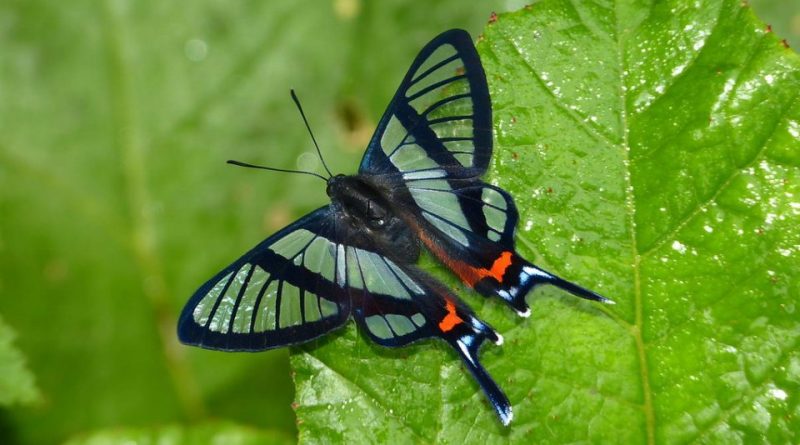Chorinea sylphina
Chorinea sylphina
The Sylphina angel (Chorinea sylphina Bates, 1868) is a butterfly belonging to the Riodinidae family.
Systematic –
From a systematic point of view it belongs to the Eukaryota Domain, Animalia Kingdom, Sub-Kingdom Eumetazoa, Superphylum Protostomia, Phylum Arthropoda, Subphylum Tracheata, Superclass Hexapoda, Insecta Class, Subclass Pterygota, Endopterygota Cohort, Order Oligoneoptera, Order Epidopidae, Order Epidopata, Heteroneura, Ditrysia Division, Papilionoid Superfamily, Riodinidae Family, Riodininae Subfamily and therefore the Chorinea Genus and the C. sylphina Species.
The terms are synonymous:
– Zeonia sylphina Bates, 1868;
– Chorinea sylphina terpsichore Stichel, 1910.
Geographical Distribution and Habitat –
The Chorinea sylphina is a butterfly that lives in the Andean areas of Ecuador, Peru and Bolivia in a habitat characterized by the rainforest, at altitudes between about 2000 and 3000 m. s.l.m ..
Morphology –
The Chorinea sylphina is a moth, black in color, characterized by a wingspan that fluctuates on average between 8 and 12 cm, with wings bordered in black and with black lateral and vertical streaks that make up transparent wing formations.
The lower part of these is yellow – orange.
The structure and origin of the transparency of the wings of Chorinea sylphina have been explored using optical microscopy, scanning electron microscopy, UV photography, spectrophotometry and optical polarimetry.
These were found to exhibit significant transmission and minuscule reflection throughout the visible regime in the electromagnetic spectrum.
It was also understood that transparency derives from the scarcity, semi-transparency and vertical orientation of the individual flakes on the wing membrane.
The red and dark brown colors of the non-transparent areas of the wings have a pigmentary origin.
The transparent areas of the wings function as polarizing absorbents.
The eggs are pinkish and finely carved.
Aptitude and biological cycle –
The female lays her eggs in ordered lots, up to about 160, on the underside of the leaves of the plants they feed on, which include Prionostemma (Hippocrataceae) and Maytenus (Celastraceae).
The newly emerged larvae feed gregariously, nibbling the cuticle on the upper surface of the leaves.
After the 3rd stage they feed on their own; each larva lives within its leaf refuge.
The pupa also forms inside a leaf shelter.
Butterflies spend most of their time in groups of 5-12 on the underside of the leaves at a height of about 5 m.
At ground level, however, they are almost always observed individually.
These butterflies fly in full sun and can occasionally be observed on the edge of streams or puddles.
Ecological role –
The Sylphina angel is a butterfly that flies in full sun and that occasionally settles on the leaves of the bushes. For this feature when observed in flight, the transparent wings of this beautiful butterfly reflect a myriad of shimmering shimmering shades of green, blue and pink that enchant that observes them.
Among other things, as they quickly flit around bushes and shrubs, they could easily be mistaken for dragonflies, until it settles under a leaf and stops fluttering.
However, these butterflies rarely meet.
The genus Chorinea includes 8 species, all of which follow the same basic wing pattern of the sylphine, but which vary in the configuration and extent of the red marks on their hind legs.
Guido Bissanti
Sources
– Wikipedia, the free encyclopedia.
– Russo G., 1976. Agricultural entomology. Special Part. Liguori Editore, Naples.
– Tremblay E., 1997. Applied entomology. Liguori Editore, Naples.

